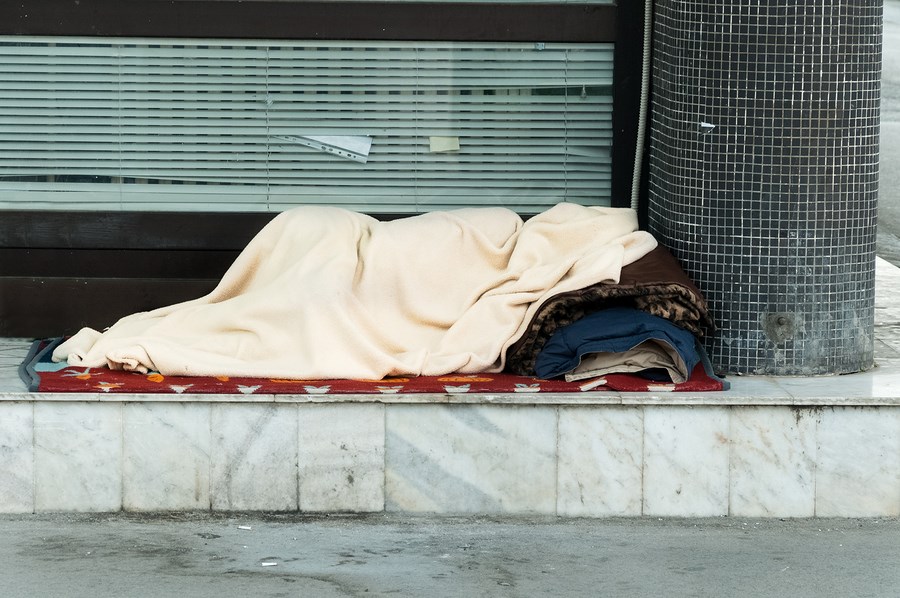As the harsh reality of another winter sets in, local stakeholders are looking for housing solutions for Flin Flon’s homeless population.
A meeting between stakeholders from the Flin Flon Aboriginal Friendship Centre and Northern Health Region and some of Flin Flon’s landlords was held on Nov. 2 at the Flin Flon Aboriginal Friendship Centre to discuss challenges landlords face, and potential solutions for those without a permanent address. While ideas were floated around the table for long term solutions that will take time to develop, there’s a more immediate need to house people without a home during the cold months.
As the housing co-ordinator with the Flin Flon Aboriginal Friendship Centre, Jason Straile tries to find housing for people who are homeless or at risk of becoming homeless. The task is challenging, as according to local landlords, there is almost no vacancy in the region.
“It’s difficult in our area because of our lack of housing and because of our area,” said Straile, who currently has 22 clients, but believes this is just a fraction of the homeless population in Flin Flon. In May 2014, the University of Winnipeg conducted a study on homelessness in Flin Flon in collaboration with the Flin Flon Aboriginal Friendship Centre. The study found there were about 110 people in Flin Flon who self-identified as homeless, but that number only reflects the people who came forward for the study.
The study found that 53 per cent of the participants were from Saskatchewan, and dubbed homelessness a regional issue.
“We have lots of people moving from outside areas,” said Straile.
“They’re coming into the area without any housing. They’re moving here for opportunities, and there aren’t a lot – especially jobs that will pay enough to pay the rent. There are minimum wage jobs, but that’s not enough to pay rent.”
The study found the transient state of many homeless people in the area as well as a lack of employment opportunities as barriers to intervention.
Straile noted rental costs are increasing in the area due to the raising hydro rate and in some cases taxes, making the cost of housing – when it becomes available – a barrier as well.
“Landlords are having to pay more, but it’s not funneling down where people are making more money in low income [sectors].”
While some people seek shelter on the street, in garages, or in makeshift shelters in the bush surrounding Flin Flon, for many of Straile’s clients, their homelessness is ‘hidden’ – they aren’t sleeping on the street or visible to the community.
“A misconception about homelessness is that they have to be sleeping on the street to be homeless,” said Straile.
“These are people who are moving from couch to couch or living in a basement or crashing at a friend’s house … We don’t have 110 people sleeping on the street, so when people look around, they don’t see our homeless. They see the one or two people who they think are homeless, and some of them aren’t.”
Many of Straile’s clients struggle with addictions and need additional support. The Housing First program out of the Friendship Centre offers a recovery-oriented approach to ending homelessness, and sees clients placed in housing and then provided with additional support, rather than the traditional model of addressing addictions and mental health issues first as a way to combat homelessness.
“It’s tough to work on an addiction issue if you don’t even have a roof over your head,” said Straile.
“If you’re worried about where you’re going to sleep tonight or how you’re going to stay warm or whatever it may be, then how are you really going to be worried about getting help for your addiction?”
While addiction issues can co-exist with homelessness, poverty is the main root cause of it – 60 per cent of the people studied in Flin Flon were on social assistance and many were living pay cheque to pay cheque. The threat of loss of employment or loss of industry in an area increases the population of people at risk of homelessness.
One of the issues identified during the landlord-stakeholder meeting was a ‘not-in-my-backyard’ mentality in the community – residents who pay thousands of dollars in property taxes each year are wary of having people with perceived issues in low income housing in their neighbourhoods. Straile said it will take time, education and working with community members to change that outlook.
“The start is to work with community members, and start getting an understanding of what homelessness is and the issues that are coming from it,” said Straile.
“People don’t realize that it’s actually cheaper to house somebody than to have them homeless.”
Straile listed savings in the health care and policing systems.
Studies have shown that the average monthly cost of housing someone while homeless is about $199, while it costs $1,932 for a shelter bed, $4,333 for a month-long stay in jail, and $10,900 for a hospital bed.
“People think it’s going to be a handout. People don’t realize the taxes are going to that, anyway. It’s costing us more money than finding a place for somebody to live and putting some dignity into their lives.”
Straile added it will be important to show success in any endeavour to curb homelessness.
“You have to prove yourself. Not everyone’s going to buy into it right away. They have to see it’s going to work, and when you rent to somebody, it’s not going to be someone who’s going to trash your place or trash the community. They’re going to be part of the community, not just a drain on it.”




